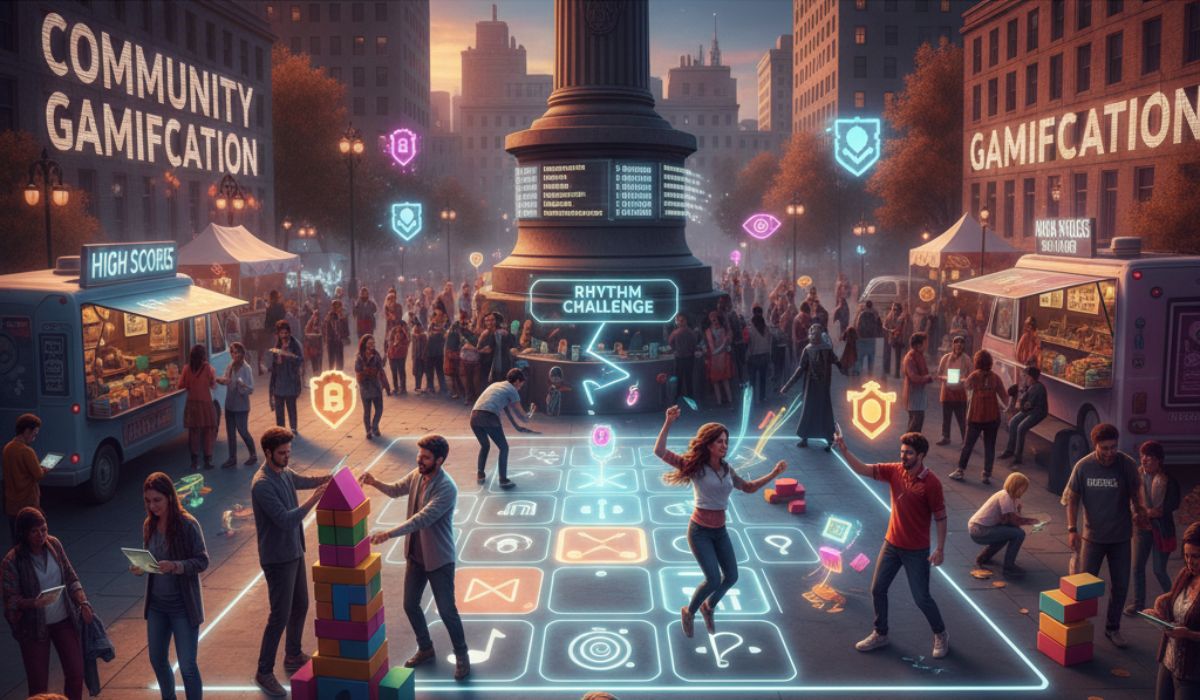Building a thriving community isn’t easy. At first, people join with excitement, but before long, activity slows down—posts get ignored, discussions lose momentum, and the energy you worked so hard to create begins to fade.
This is where community gamification makes a difference. By incorporating fun, game-like features—such as points, badges, leaderboards, and challenges—you can transform passive members into active participants. Tools such as Circle gamification make it simple to reward engagement, spark friendly competition, and create a sense of progress that keeps people coming back.
The result goes far beyond just boosting activity. Gamified communities see higher member retention, stronger connections, and more meaningful conversations. When done right, gamification transforms your platform into a place where people genuinely enjoy spending time—because participation feels fun, rewarding, and worthwhile.
What Is Community Gamification?
Community gamification is the practice of applying game design elements to online communities and other non-gaming environments to boost engagement, participation, and loyalty. Instead of turning your community into a game, it leverages psychological triggers—such as achievement, recognition, and progress—that make interactions more motivating and enjoyable.
Key Elements of Community Gamification
The core elements include:
-
Point systems: Reward members for meaningful actions and contributions.
-
Achievement badges: Recognize milestones and accomplishments.
-
Leaderboards: Encourage friendly competition among members.
-
Progress bars: Visualize advancement and goals.
These mechanics succeed because they provide immediate feedback, clear objectives, and social recognition—features often missing in traditional online communities.
How to Implement Gamification Effectively
Effective community gamification goes beyond adding points or badges. It requires understanding your community’s unique culture, values, and member behaviors. The most successful strategies feel natural, enhancing the community experience rather than distracting from it. Tools like Circle gamification can help structure these systems, creating a self-sustaining ecosystem where members stay motivated, connected, and actively engaged.
The Psychology Behind Engagement Rewards
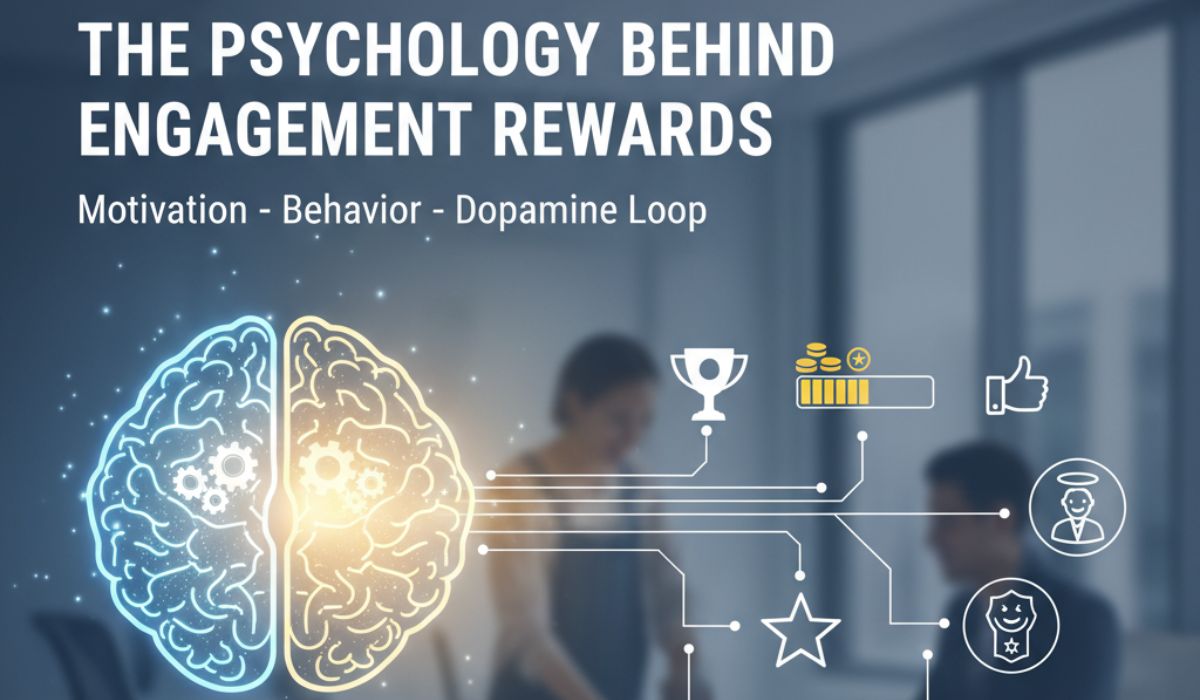
Engagement rewards work because they satisfy basic human psychological needs. The concept of variable rewards—similar to what makes social media addictive—creates anticipation and excitement around community participation. When members are unsure of when they’ll receive recognition or unlock new features, they’re more likely to stay engaged.
Social recognition plays a crucial role in driving continued participation. Public acknowledgment through badges, featured posts, or leaderboard rankings provides the social validation that many community members seek. This recognition often proves more motivating than monetary rewards because it builds reputation and status within the group.
Progress visualization helps members understand their journey within the community. Clear indicators of advancement—whether through experience points, completion percentages, or unlocked privileges—give members a sense of momentum and achievement. This transparency reduces the friction often associated with long-term community participation.
Effective Gamification Strategies for Communities
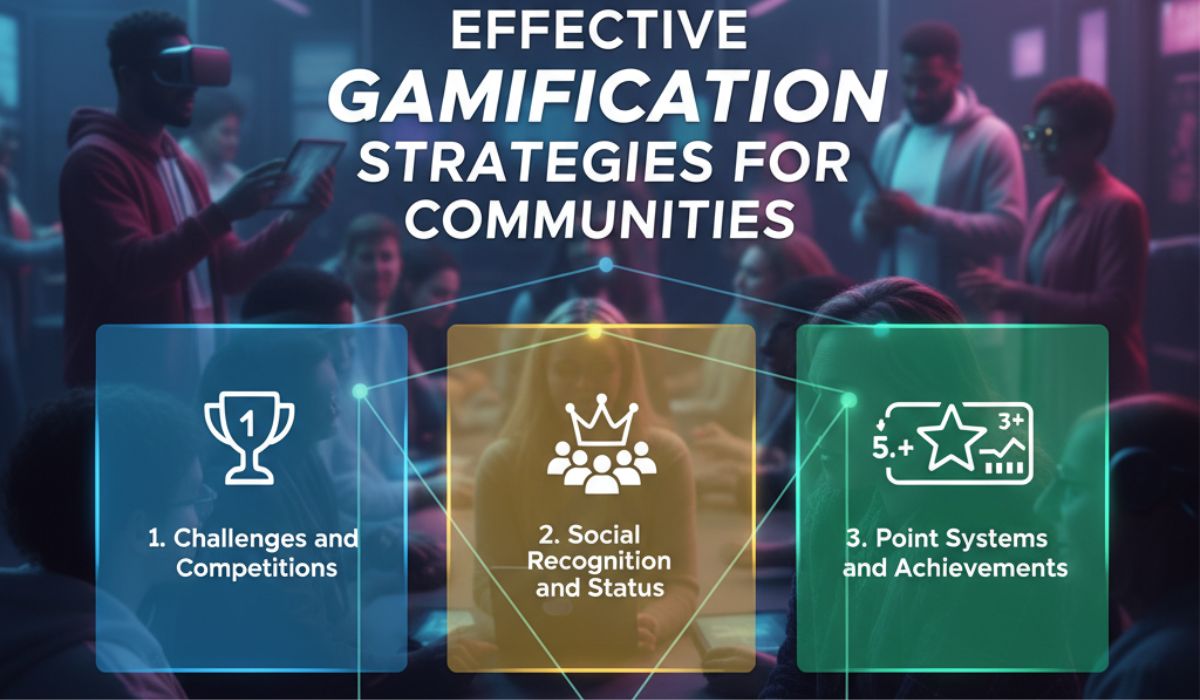
Point Systems and Achievements
Design point systems that reward behaviors you want to encourage. Award points for posting quality content, helping other members, participating in discussions, and completing profile information. Ensure the point values accurately reflect the difficulty and value of each action in relation to your community’s goals.
Create meaningful achievement badges that recognize different types of contributions. Consider badges for milestones like “First Post,” specialized knowledge areas like “Expert Helper,” or community values like “Supportive Member.” Each badge should feel earned rather than given away freely.
Social Recognition and Status
Implement leaderboards that highlight top contributors across different categories. Monthly recognition boards can showcase helpful members, creative contributors, or the most active participants. Rotate these categories to ensure various member types receive recognition.
Feature exceptional contributions through spotlight posts, member interviews, or dedicated showcase areas. This type of recognition often motivates higher-quality contributions better than points alone, as it provides meaningful exposure within the community.
Challenges and Competitions
Organize time-limited challenges that encourage specific behaviors. Photo contests, knowledge-sharing challenges, or collaborative projects can generate excitement and focused participation. These events create natural conversation starters and give less active members clear entry points for engagement.
Design team-based competitions that encourage collaboration over pure individual achievement. Group challenges foster relationships among members as they work toward shared goals, thereby strengthening overall community bonds.
Circle Gamification: Building Connected Communities
Circle platforms and similar digital community tools make gamification easy to implement. These platforms offer built-in features like customizable point systems, achievement badges, leaderboard rankings, and automated member recognition. These mechanics are designed to boost engagement, increase activity, and strengthen online community interaction.
The secret to effective Circle gamification is matching the game mechanics to your community goals. If your platform supports professional development, reward activities like knowledge sharing, peer mentoring, posting helpful resources, or demonstrating new skills. For creative communities, focus on incentives for sharing artwork, offering feedback, joining group challenges, and contributing to collaborative projects.
Start with simple, clear mechanics. Introduce basic rewards and participation goals before adding advanced systems such as tiered badges or experience levels. Track what motivates members the most—whether it’s points, public recognition, or exclusive access—and adjust your structure based on behavior.
The strongest online communities constantly evolve. They refine rewards using member feedback, engagement analytics, and behavioral patterns, turning the platform into a motivating environment where people connect, contribute, and stick around longer. With the right strategy, Circle gamification transforms passive audiences into active communities built on trust, interaction, and shared value.
Measuring Success and Avoiding Pitfalls
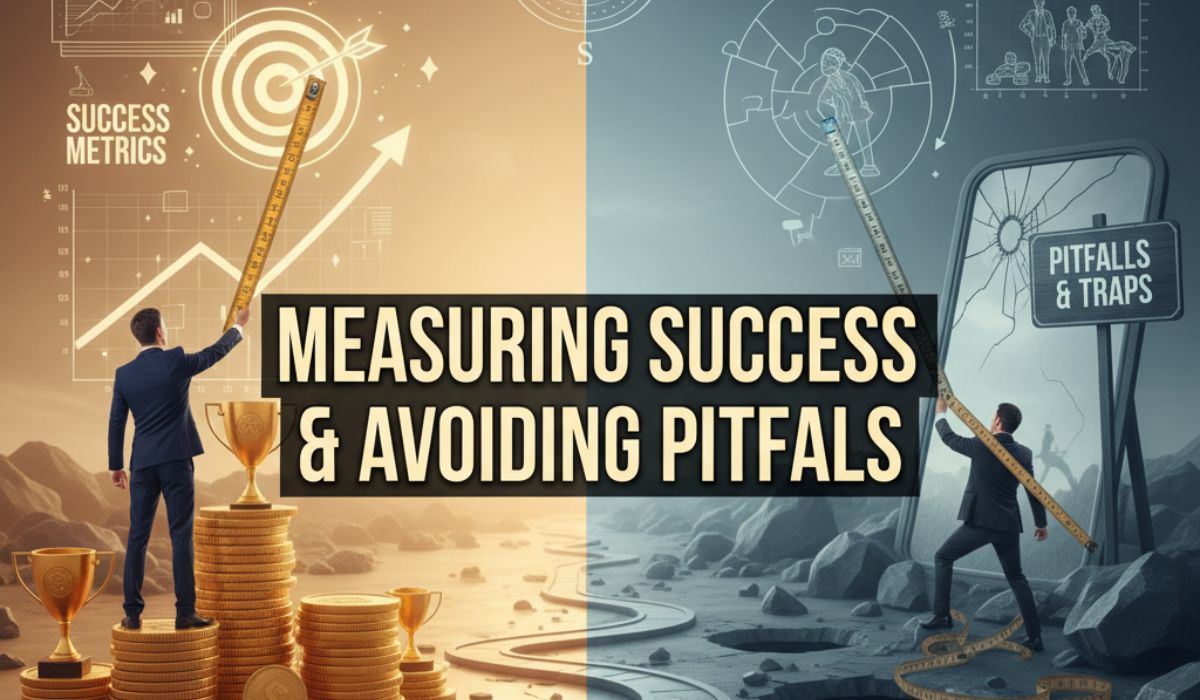
To measure success, track meaningful metrics—not just surface-level engagement numbers. Look at the quality of member contributions, retention rates, referral activity, community growth, and participation distribution. Strong gamification should improve both the volume and value of interactions, creating deeper member involvement over time.
Avoid over-gamification. When game mechanics overpower authentic connection, the community experience becomes artificial or even manipulative. Gamification should support real relationships, knowledge sharing, and collaboration—not turn participation into a race for points. If members begin chasing badges instead of helping each other, it’s time to adjust your approach.
Regular audits are essential. Review your reward system to identify unintended outcomes. Sometimes people learn to game the system by posting low-effort comments or repetitive content just to earn points. This reduces the overall value of the community and weakens trust.
Successful community gamification focuses on long-term engagement, meaningful interaction, and community culture building. By aligning rewards with genuine contribution and continuously refining the mechanics, you can maintain a healthy, motivated, and high-quality online community.
Getting Started with Community Gamification
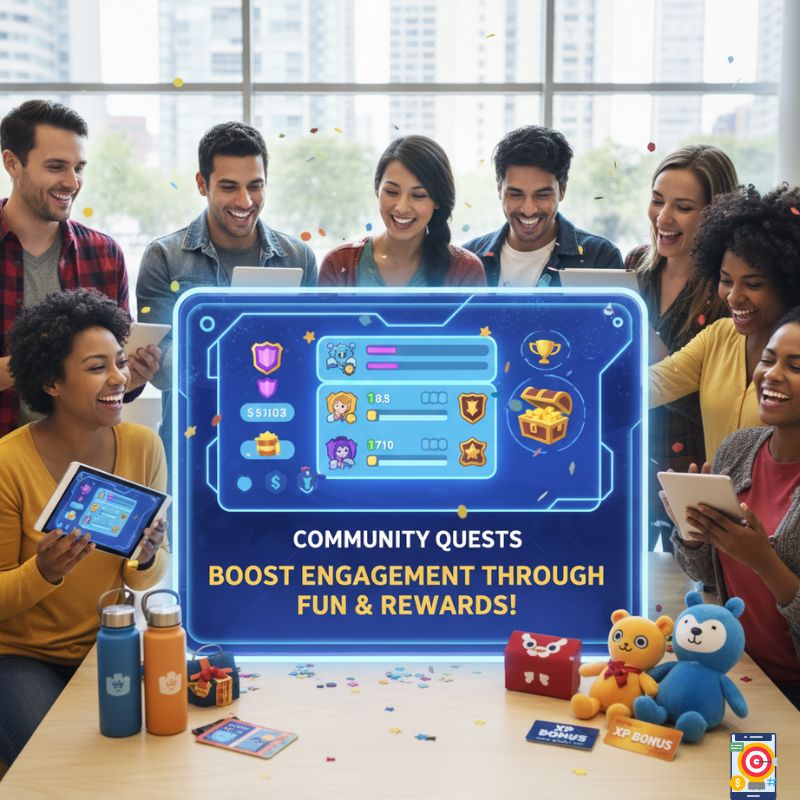
Begin by identifying your community’s most valuable behaviors and the current challenges to engagement. Survey active members to understand what motivates them and identify the barriers that prevent their participation. This research forms the foundation for an effective gamification strategy.
Start with one or two simple mechanics rather than implementing a complex system immediately. A basic point system for helpful posts or a “Member of the Month” recognition program can generate significant improvements in engagement without overwhelming your community management resources.
Test your gamification elements with a small group of engaged members before rolling out community-wide. Their feedback helps identify potential issues and ensures the system feels natural and motivating rather than forced or confusing.
Transform Your Community Through Strategic Gamification
Community gamification represents a powerful approach to solving engagement challenges that plague many online groups. When implemented thoughtfully, these systems create positive feedback loops that encourage continued participation and deeper member connections.
Success requires understanding your community’s unique culture and motivations. The most effective gamification feels natural and enhances existing community dynamics rather than imposing external game mechanics. Start small, measure results, and iterate based on member response to build a system that truly serves your community’s goals.
Investing in community gamification yields dividends through increased retention, higher-quality contributions, and stronger member relationships. It also strengthens overall community building, making your space a place members actively choose to spend time because the experience feels rewarding and meaningful.
Frequently Asked Questions
How long does it take to see results from community gamification?
Most communities experience an increase in initial engagement within two to four weeks of implementing gamification elements. Sustained behavioral changes typically develop over 2-3 months as members adapt to the new reward systems.
What budget is needed for community gamification?
Many gamification strategies require minimal financial investment, focusing instead on recognition and status rewards. Platform tools like badges and leaderboards often come with existing community software, making implementation cost-effective.
How do you prevent gamification from feeling artificial?
Keep game elements subtle and ensure they support your community’s core values. Focus on recognizing authentic, valuable contributions rather than creating arbitrary challenges that don’t serve member needs.
Can gamification work for professional communities?
Professional communities often respond well to gamification that emphasizes expertise recognition, rewards for knowledge sharing, and peer acknowledgment. Focus on credibility-building elements rather than entertainment-focused mechanics.


